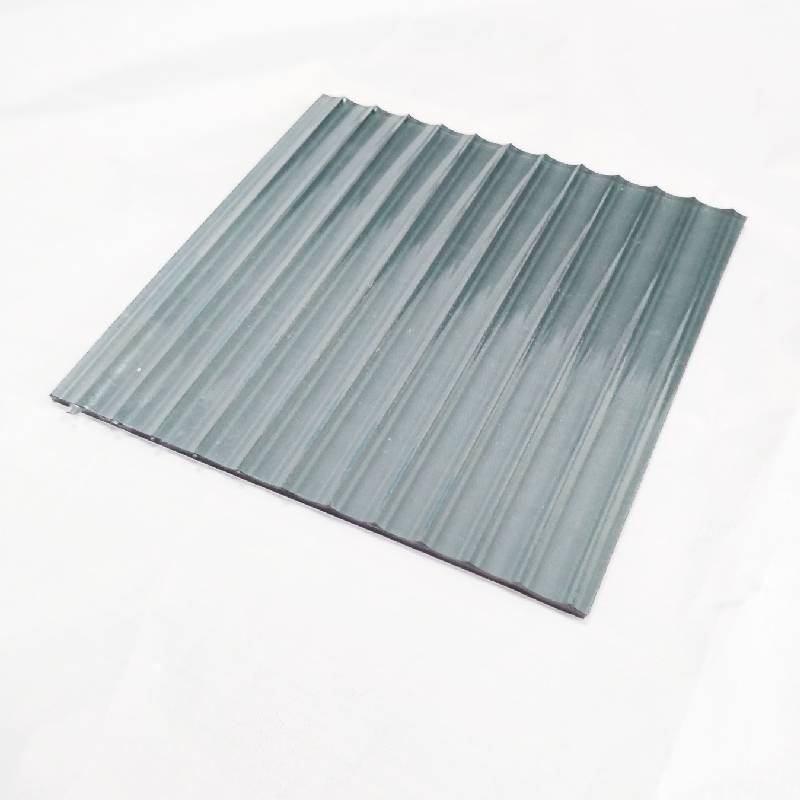The Future of Smart Glass Revolutionizing Privacy with Opaque Technology
In an ever-evolving technological landscape, the advent of smart materials has paved the way for innovative applications that not only enhance aesthetics but also provide functional benefits. One of the most exciting developments in this realm is the creation of glass that can turn opaque, revolutionizing how we think about privacy and design in our living and working spaces.
Traditionally, maintaining privacy in our homes and offices has involved using curtains, blinds, or frosted glass. While these solutions can be effective, they often compromise natural light, hinder visibility, and can be cumbersome to manage. Enter the new generation of smart glass, a technology that enables glass surfaces to transition from transparent to opaque at the touch of a button or through a programmed schedule.
How Does It Work?
The mechanism behind this innovative glass involves a material known as liquid crystal or polymer dispersed liquid crystals (PDLC). When an electrical current is applied to the glass, the liquid crystals align in a way that allows light to pass through, rendering the glass transparent. Conversely, when the current is turned off, the crystals scatter light, resulting in an opaque appearance. This seamless transition provides a perfect solution for spaces that require flexible privacy without sacrificing natural light.
Another approach to achieving opacity is through the use of electrochromic technology, which involves materials that change color or opacity in response to an electrical charge. These variations can also allow users to control the level of light transmission, creating spaces that are not only functional but also conducive to relaxation, productivity, and privacy.
Applications in Daily Life
The potential applications of this technology are vast and varied. In residential settings, smart glass can be installed in bathrooms, bedroom windows, or any area where discretion is desired. Homeowners can enjoy the openness of natural light during the day while maintaining complete privacy in the evening simply by activating the opaque setting.
In commercial spaces, smart glass can serve as an effective partitioning tool in offices, meeting rooms, or conference areas. This technology allows for flexible layout options, enabling teams to create open, collaborative environments while maintaining the ability to seclude meetings when necessary. The ability to control visual access to sensitive discussions adds an additional layer of discretion that is increasingly vital in today’s business climate.
glass that can turn opaque
Retail spaces can also benefit significantly from these advancements. Storefronts outfitted with smart glass can shift from transparent to opaque, creating an intriguing dynamic that can be used for displays or to enhance the shopping experience. During off-hours, the store can maintain security while still appearing inviting during regular business hours.
Energy Efficiency and Sustainability
Beyond aesthetics and functionality, smart glass technology can contribute to energy efficiency in buildings. By controlling light transmission, it can help regulate indoor temperature, reducing reliance on heating or cooling systems. This energy efficiency translates into lower utility bills and a smaller carbon footprint, aligning with the increasing emphasis on sustainability in contemporary design.
Challenges and Considerations
While the benefits are substantial, there are challenges associated with the widespread adoption of smart glass. The initial costs of installation can be higher than traditional glass options, which may deter some consumers. Additionally, the technology requires a reliable power source, which could pose issues in areas where energy supply is inconsistent.
However, as technology continues to advance and economies of scale come into play, it is likely that costs will decrease, making smart glass a more accessible option for average consumers.
Conclusion
The development of glass that can turn opaque marks a significant leap forward in how we approach design, privacy, and efficiency in our environments. With applications ranging from private homes to bustling commercial spaces, smart glass holds the promise of transforming our interactions with our surroundings. As this technology becomes more pervasive, it will undoubtedly lead to new possibilities in architecture and interior design, making our spaces not only more beautiful but also more functional and adaptable. The future is bright, quite literally; with smart glass, we can enjoy the best of both worlds.
 Afrikaans
Afrikaans  Albanian
Albanian  Amharic
Amharic  Arabic
Arabic  Armenian
Armenian  Azerbaijani
Azerbaijani  Basque
Basque  Belarusian
Belarusian  Bengali
Bengali  Bosnian
Bosnian  Bulgarian
Bulgarian  Catalan
Catalan  Cebuano
Cebuano  Corsican
Corsican  Croatian
Croatian  Czech
Czech  Danish
Danish  Dutch
Dutch  English
English  Esperanto
Esperanto  Estonian
Estonian  Finnish
Finnish  French
French  Frisian
Frisian  Galician
Galician  Georgian
Georgian  German
German  Greek
Greek  Gujarati
Gujarati  Haitian Creole
Haitian Creole  hausa
hausa  hawaiian
hawaiian  Hebrew
Hebrew  Hindi
Hindi  Miao
Miao  Hungarian
Hungarian  Icelandic
Icelandic  igbo
igbo  Indonesian
Indonesian  irish
irish  Italian
Italian  Japanese
Japanese  Javanese
Javanese  Kannada
Kannada  kazakh
kazakh  Khmer
Khmer  Rwandese
Rwandese  Korean
Korean  Kurdish
Kurdish  Kyrgyz
Kyrgyz  Lao
Lao  Latin
Latin  Latvian
Latvian  Lithuanian
Lithuanian  Luxembourgish
Luxembourgish  Macedonian
Macedonian  Malgashi
Malgashi  Malay
Malay  Malayalam
Malayalam  Maltese
Maltese  Maori
Maori  Marathi
Marathi  Mongolian
Mongolian  Myanmar
Myanmar  Nepali
Nepali  Norwegian
Norwegian  Norwegian
Norwegian  Occitan
Occitan  Pashto
Pashto  Persian
Persian  Polish
Polish  Portuguese
Portuguese  Punjabi
Punjabi  Romanian
Romanian  Russian
Russian  Samoan
Samoan  Scottish Gaelic
Scottish Gaelic  Serbian
Serbian  Sesotho
Sesotho  Shona
Shona  Sindhi
Sindhi  Sinhala
Sinhala  Slovak
Slovak  Slovenian
Slovenian  Somali
Somali  Spanish
Spanish  Sundanese
Sundanese  Swahili
Swahili  Swedish
Swedish  Tagalog
Tagalog  Tajik
Tajik  Tamil
Tamil  Tatar
Tatar  Telugu
Telugu  Thai
Thai  Turkish
Turkish  Turkmen
Turkmen  Ukrainian
Ukrainian  Urdu
Urdu  Uighur
Uighur  Uzbek
Uzbek  Vietnamese
Vietnamese  Welsh
Welsh  Bantu
Bantu  Yiddish
Yiddish  Yoruba
Yoruba  Zulu
Zulu 

